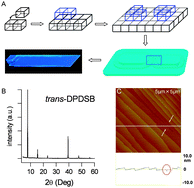Several slice-like organic crystals grown by the physical vapor transport method: combining atomic force microscopy and X-ray diffraction to explore the characteristics of crystal formation†‡
Abstract
The surface morphologies and structural information of several slice crystals grown by the physical vapor transport (PVT) method were investigated using


 Please wait while we load your content...
Please wait while we load your content...